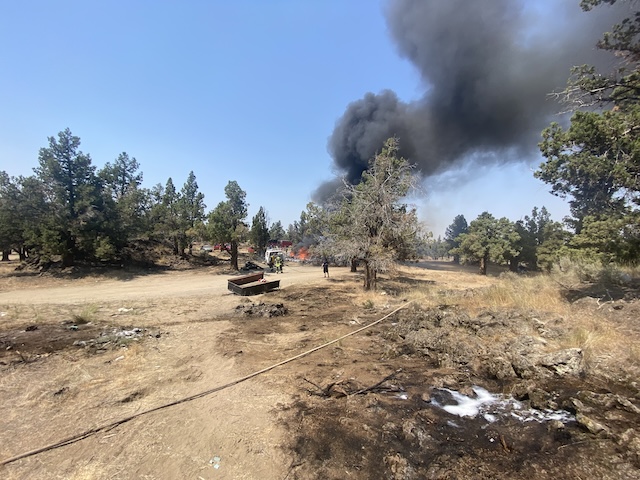Bend encourages smaller multifamily housing
Published 5:47 am Saturday, March 18, 2017
Land developer Al Zemke realized what was missing in Bend’s rental market after selling his home on Awbrey Butte.
The deal closed in 30 days, he said, and he found himself scrambling to find a rental home. At 74 years old, Zemke doesn’t want to walk up flights of stairs, and he thinks the duplexes available in Bend are too shabby. He figures thousands of aging baby boomers feel the same way, so he created a 12-lot subdivision on the east side near Costco where a builder plans a mix of townhouses, duplex and triplex buildings.
Trending
“I realized what is needed in Bend is not more apartments,” Zemke said. “It’s not a bunch of fool tiny houses.”
City planners and real estate professionals think Bend needs more such developments to fill the middle ground between single-family houses and large apartment complexes. Advocates of the “missing middle” say duplexes, fourplexes and small apartment buildings can increase the supply of housing without generating a lot of traffic and disrupting a neighborhood.
“They’re, I think, one of the best ways to provide non-subsidized affordable housing types,” said Dale Van Valkenburg, director of development at Brooks Resources, which created the master-planned NorthWest Crossing neighborhood. “They can be peppered around neighborhoods, and you don’t even know they’re there.”
Yet some of the small apartment complexes that have already been approved or built were met with intense opposition from neighbors, partly because of their locations on cul-de-sacs at the end of streets occupied by single-family houses.
“It’s tough with infill, no question,” Van Valkenburg said. “Sometimes a single-family house gets people upset. Because it’s (occupying) open space.”
The main promoter of “missing-middle” housing types is San Francisco architect Dan Parolek, who is scheduled to speak April 10 at the Tower Theatre in Bend. He did not respond to a request for interview from The Bulletin, but his website, www.missingmiddle.com, describes the concept as “a range of multi-unit or clustered housing types compatible in scale with single-family homes that help meet the growing demand for walkable urban living.”
Trending
Bend is already encouraging middle-housing types through zoning-code changes that came with a new urban-growth boundary, approved by the state in November.
Under one code change, duplexes can be built anywhere in a single-family residential zone without a conditional-use permit. Previously, duplexes were automatically permitted only on corner lots. Triplexes are also permitted in single-family zones, as long as the lot is at least 10,000 square feet.
The Bend Community Development Department received 24 site-plan review applications for duplexes in 2016, twice as many as the year before, Senior Planner Aaron Henson said.
The city also relaxed parking requirements for duplexes, triplexes and apartment buildings, which could encourage more infill development. “We’ve got a lot of medium-density residential neighborhoods in Bend that were historically developed with single-family homes,” Henson said. “The economics work for someone to tear down a house … and replace it with townhomes or a small apartment building.”
Henson said a few apartment complexes also fit the middle-housing concept. There’s a 12-unit complex on Summer Lake Place in southwest Bend, and nine units were built on Debron Lane, near Central Oregon Community College. In January, the city approved a plan for 14 units on Black Pines Place, also near COCC.
While Bend has seen more middle-size developments, Henson said, “It’s still not at the level we expect will happen as Bend continues to build up.”
Financing is one factor that could be holding back small multifamily developments, Van Valkenburg said. An individual can use a traditional bank loan to build a duplex or in-law apartment, but he said the how-to of financing and managing a small apartment project is not widely known.
Financing for real estate projects has become the domain of private lenders, rather than banks, Zemke said. The terms are short, and interest rates are at least 9 percent with high closing costs, he said. “So you’d better be very confident in whatever it is you’re going to do.”
Zemke said he decided to sell his project because it took longer than he expected to get the subdivision plan approved. “I’m selling it to some individuals that are going to build it out,” he said. “They have their own private financing in place.”
While the city of Bend is encouraging landowners to maximize housing density, not all developers do so.
Park Terrace, Zemke’s project at NE Purcell Boulevard and NE Paula Drive, is on about 2 acres, and the zoning would have permitted a 32-unit apartment building. Instead, Zemke planned 19 units. He thinks Bend has too many apartment buildings in the works, and duplexes with high-end finishes will be more marketable to retirees.
The apartments on Black Pines Place were widely opposed by people living on the street of single-family homes.
The initial plan called for more than 14 units, but developer RD Building & Design, which didn’t return a call from The Bulletin, decided to build out only one of two lots, Henson said.
Henson expects the second, adjacent lot will be developed in the future. In the meantime, the first 14 units will be split among four buildings, which are similar in scale to the neighboring houses. “Maybe once the neighbors see the first 14 units, they won’t be as concerned.”
— Reporter: 541-617-7860, kmclaughlin@bendbulletin.com
City planners and real estate professionals think Bend needs more such developments to fill the middle ground between single-family houses and large apartment complexes. Advocates of the “missing middle” say duplexes, fourplexes and small apartment buildings can increase the supply of housing without generating a lot of traffic and disrupting a neighborhood.








